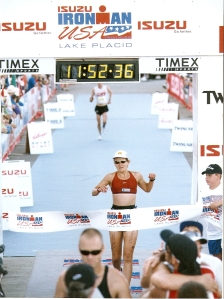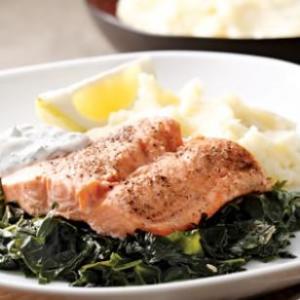I have been a triathlete for over 18 years. Even though I have raced 3 Ironman races (IMLP x 2 and IM WI), and know if I raced another, I would do my race day nutrition completely differently than I did back then. Why? Because the way I eat has changed, so my need have changed. So the calories I really need per hour has significantly dropped in the past few years. If I only knew then what I know now…..
It comes up quite frequently from clients and on Facebook and LinkedIn social media platforms. Everyone wants to know how many calories to take in per hour and how much liquid. And every time, someone is always promoting their product as the best one. And the posters will always suggest you need at least 300 calories per hour. How many calories do you really need? Well, it is not closer to 300, but closer to 150-200, and for some less than that. And this caloric need includes the gels, sports/ electrolyte drink, bars, real food and/or fruit. It is the combination of all those types of calories. But the biggest factor in determining your caloric needs is not based on some magical formula and training. It is based on how your body is efficient in burning fat vs burning sugars. And this is based on your every day meal consumption and timing of meals.

Most of the clients I work with have GI issues during races. Not as much in training, but that is probably because they never put a swim, bike and run like race day together as a training day. It is actually hard to do in training, but you can get close. How you eat during your every day of each week is going to more indicative of how many calories you need per hour on the bike or run or swim. Yes, you can take in more calories on the bike so you have ‘more in the tank’ for the run, but I have seen this backfire more often and GI distress and nausea setting in. Or throwing up as everything is sloshing around in our stomach which is unable to empty due to too many sugars and calories ingested. Once you throw up, you feel better. Not what I would call a pleasant experience, or a good strategy. But many people do it!
When I work with clients, we work on what Bob Seebohar refers to as Metabolic Efficiency. We balance the blood sugars with balanced meals (some high quality protein, some high quality carbohydrates, fiber, lots of green vegetables, and some high quality fat). We do this with the Race Day Nutrition Strategy Package over the course of several weeks or months. This might seem like a ton of food, but it really is not. Once you get the routine down of eating meals like this all day long, you will find that you eat less more often, you eat only as much as you need, you stop when you are comfortably satiated and your body starts to burn fat rather than store fat. You get to this fat burning mode, and then are using your body fat stores for energy (9 kcal per gram) rather than sugars (4 kcals per gram) from muscle glycogen stores.
Conversely, if your diet is a carbohydrate heavy diet, you will be feeling hungry often during the day, and continuously spiking the blood sugar with breads, pretzels, cookies and pasta typically. This leads to your body storing fat, and using sugars and muscle glycogen for energy stores. And we know that glycogen stores get depleted quickly. When your body is in sugar burning mode, your need for sugars while exercising increases. And the caloric needs can be in excess of 300 calories per hour. The more sugars you take in, the increase in digestion distress increases.
How many calories do you really need?
The answer is not always as simple as ‘just consume X00 calories per hour’ while training. Your needs change as your diet changes. When I was racing Ironman 14 years ago, yes, I had a carb heavy diet and yes, I was consuming about 300-500 calories per hour using a sports drink, gels and a bar as needed. I did not have the GI distress but I was always hungry and I wondered why I was never that lean despite the training hours. I always felt fat, too.
If I were to race now, since changing my diet to a balanced meal/ balanced blood sugar

approach, I would be able to complete the race with 110 calories per bottle per hour (vs 250), maybe a shot of gel here and there, or a couple of dates of baked red potatoes. The calories per hour would be about 110-200 calories max and my focus would be more on electrolyte replacement rather than caloric intake.
For those getting ready for an Ironman distance race, a 12-hour mountain bike race, or multi-hour event, a Race Day Nutrition Strategy Session might be all you need to identify your race day needs. If you have more than 2 months, the more complete 4 session Race Day Nutrition Package would be more appropriate to help guarantee your race will be your best race, with nothing left to chance with your nutrition. It is not about the calories you need per hour, it is about how is your body burning its calories per hour, and how to optimally adjust the every day intake to maximize your race day intake.
To schedule your session today, contact Joanna at joanna-n-im.net or www.n-im.net.
You can also call her at 215-272-6774. Joanna will help you fine tune your plan so your race day is perfect.